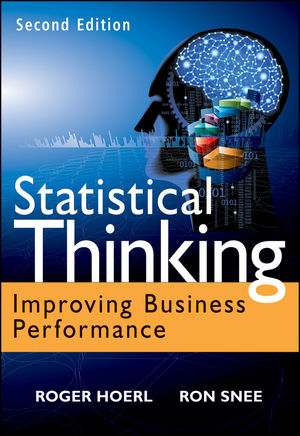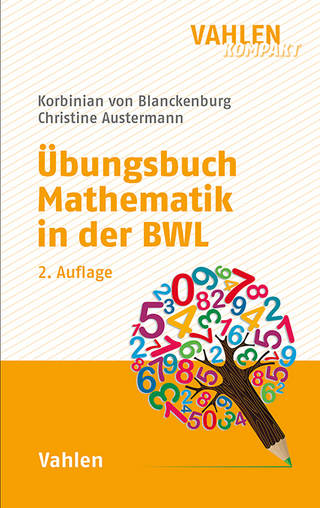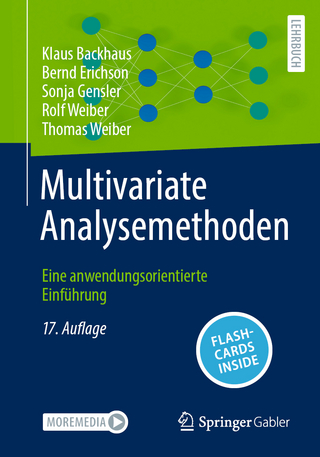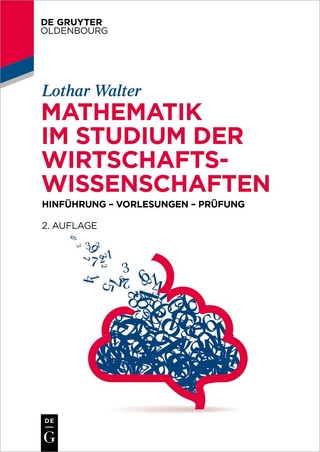
Statistical Thinking
John Wiley & Sons Inc (Verlag)
978-1-118-09477-8 (ISBN)
- Titel ist leider vergriffen;
keine Neuauflage - Artikel merken
How statistical thinking and methodology can help you make crucial business decisions Straightforward and insightful, Statistical Thinking: Improving Business Performance, Second Edition, prepares you for business leadership by developing your capacity to apply statistical thinking to improve business processes. Unique and compelling, this book shows you how to derive actionable conclusions from data analysis, solve real problems, and improve real processes. Here, you'll discover how to implement statistical thinking and methodology in your work to improve business performance. * Explores why statistical thinking is necessary and helpful * Provides case studies that illustrate how to integrate several statistical tools into the decision-making process * Facilitates and encourages an experiential learning environment to enable you to apply material to actual problems With an in-depth discussion of JMP(R) software, the new edition of this important book focuses on skills to improve business processes, including collecting data appropriate for a specified purpose, recognizing limitations in existing data, and understanding the limitations of statistical analyses.
ROGER HOERL leads the Applied Statistics Laboratory at GE Global Research, which focuses on new product and service development within each of the GE businesses. In 2006, he received the Coolidge Fellowship from GE Global Research, honoring one scientist a year from among the four global GE Research and Development sites for lifetime technical achievement. Dr. Hoerl has authored five books in the areas of statistics and business improvement, two book chapters, and over thirty-five refereed journal articles. RON SNEE is founder and President of Snee Associates, an authority on designing and implementing improvement and cost reduction solutions for a variety of organizational environments. Dr. Snee has an outstanding record of leadership in process and organizational improvement in a variety of industries including pharmaceutical, biotech, clinical diagnostics, and telecommunications. Among his other achievements, he is credited with leading the design of the first company-wide continuous improvement curriculum for the global giant E. I. DuPont de Nemours. He holds a host of awards and honors, has coauthored four books, and published more than 200 articles on process improvement, quality, management, and statistics.
Preface xiii Introduction to JMP xvii Part One Statistical Thinking Concepts 1 Chapter 1 Need for Business Improvement 3 Today s Business Realities and the Need to Improve 4 We Now Have Two Jobs: A Model for Business Improvement 7 New Management Approaches Require Statistical Thinking 10 Principles of Statistical Thinking 15 Applications of Statistical Thinking 18 Summary 20 Notes 20 Chapter 2 Statistical Thinking Strategy 23 Case Study: The Effect of Advertising on Sales 24 Case Study: Improvement of a Soccer Team s Performance 30 Statistical Thinking Strategy 39 Context of Statistical Thinking: Statistics Discipline as a System 43 Variation in Business Processes 45 Synergy between Data and Subject Matter Knowledge 50 Dynamic Nature of Business Processes 51 Summary 53 Project Update 53 Notes 54 Chapter 3 Understanding Business Processes 55 Examples of Business Processes 56 SIPOC Model for Processes 62 Identifying Business Processes 64 Analysis of Business Processes 65 Systems of Processes 79 Measurement Process 82 Summary 87 Project Update 88 Notes 89 Part Two Statistical Engineering: Frameworks and Basic Tools 91 Chapter 4 Statistical Engineering: Tactics to Deploy Statistical Thinking 93 Statistical Engineering 94 Case Study: Reducing Resin Output Variation 95 Case Study: Reducing Telephone Waiting Time at a Bank 101 Basic Process Improvement Framework 105 Case Study: Resolving Customer Complaints of Baby Wipe Flushability 111 Case Study: The Realized Revenue Fiasco 117 Basic Problem-Solving Framework 123 DMAIC Framework 128 DMAIC Case Study: Newspaper Accuracy 130 Summary 137 Project Update 137 Notes 138 Chapter 5 Process Improvement and Problem-Solving Tools 139 Stratification 141 Data Collection Tools 142 Basic Graphical Analysis Tools 156 Knowledge-Based Tools 172 Process Stability and Capability Tools 205 Summary 226 Project Update 227 Notes 227 Part Three Formal Statistical Methods 229 Chapter 6 Building and Using Models 231 Examples of Business Models 232 Types and Uses of Models 235 Regression Modeling Process 238 Building Models with One Predictor Variable 246 Building Models with Several Predictor Variables 254 Multicollinearity: Another Model Check 261 Some Limitations of Using Existing Data 264 Summary 265 Project Update 267 Notes 267 Chapter 7 Using Process Experimentation to Build Models 269 Why Do We Need a Statistical Approach? 270 Examples of Process Experiments 273 Statistical Approach to Experimentation 279 Two-Factor Experiments: A Case Study 286 Three-Factor Experiments: A Case Study 292 Larger Experiments 299 Blocking, Randomization, and Center Points 301 Summary 303 Project Update 304 Notes 305 Chapter 8 Applications of Statistical Inference Tools 307 Examples of Statistical Inference Tools 310 Process of Applying Statistical Inference 314 Statistical Confidence and Prediction Intervals 317 Statistical Hypothesis Tests 330 Tests for Continuous Data 339 Test for Discrete Data: Comparing Two or More Proportions 344 Test for Regression Analysis: Test on a Regression Coefficient 345 Sample Size Formulas 346 Summary 352 Project Update 353 Notes 353 Chapter 9 Underlying Theory of Statistical Inference 355 Applications of the Theory 356 Theoretical Framework of Statistical Inference 358 Types of Data 363 Probability Distributions 366 Sampling Distributions 382 Linear Combinations 389 Transformations 392 Summary 411 Project Update 411 Notes 412 Chapter 10 Summary and Path Forward 413 A Personal Case Study by Tom Pohlen 414 Review of the Statistical Thinking Approach 420 Text Summary 422 Potential Next Steps to Deeper Understanding of Statistical Thinking 425 Project Summary and Debriefing 427 Notes 427 Appendix A Effective Teamwork 429 Appendix B Presentations and Report Writing 439 Appendix C More on Surveys 445 Appendix D More on Regression 453 Appendix E More on Design of Experiments 467 Appendix F More on Inference Tools 479 Appendix G More on Probability Distributions 483 Appendix H Process Design (Reengineering) 491 Appendix I t Critical Values 497 Appendix J Standard Normal Probabilities (Cumulative z Curve Areas) 499 Index 503
| Reihe/Serie | SAS Institute Inc |
|---|---|
| Verlagsort | New York |
| Sprache | englisch |
| Maße | 179 x 263 mm |
| Gewicht | 1170 g |
| Themenwelt | Mathematik / Informatik ► Mathematik ► Finanz- / Wirtschaftsmathematik |
| Wirtschaft ► Betriebswirtschaft / Management ► Unternehmensführung / Management | |
| ISBN-10 | 1-118-09477-8 / 1118094778 |
| ISBN-13 | 978-1-118-09477-8 / 9781118094778 |
| Zustand | Neuware |
| Haben Sie eine Frage zum Produkt? |
aus dem Bereich



